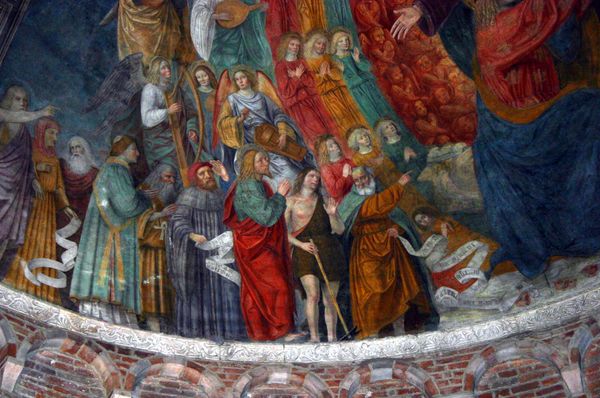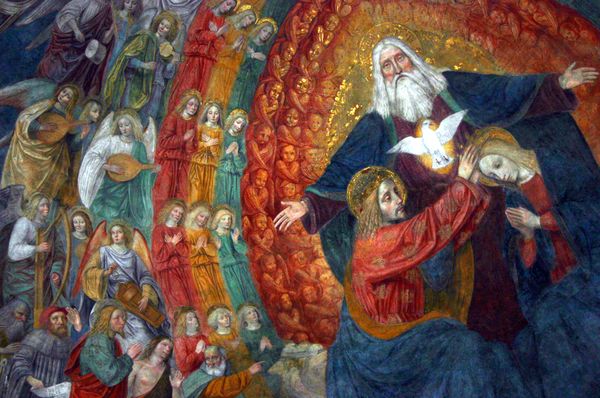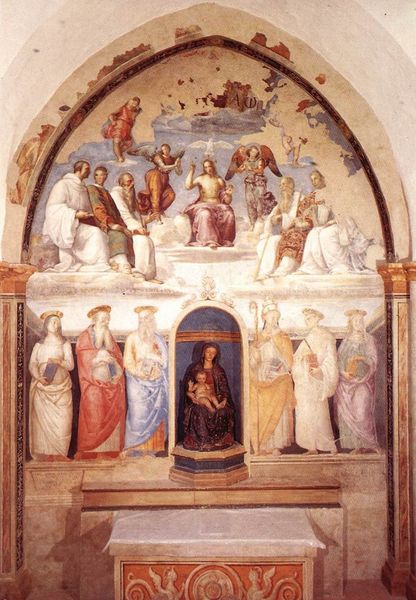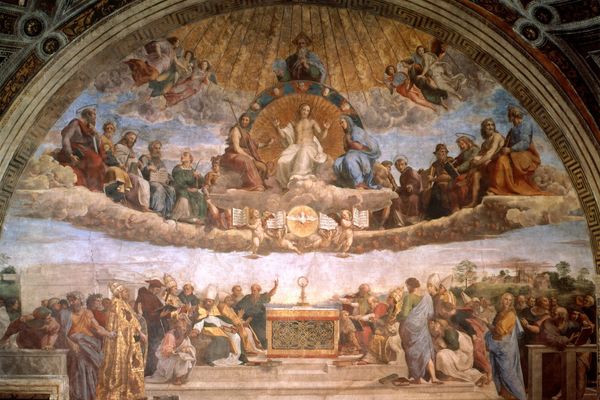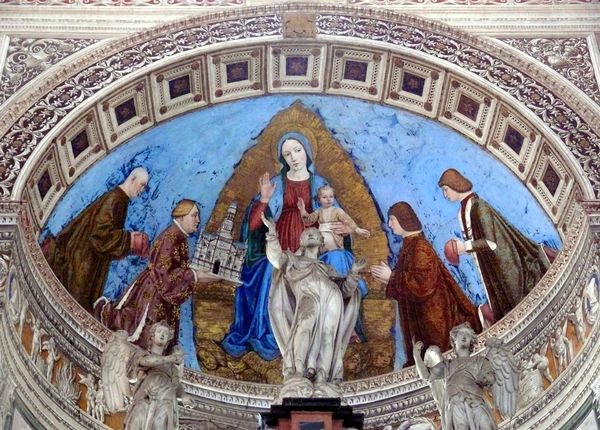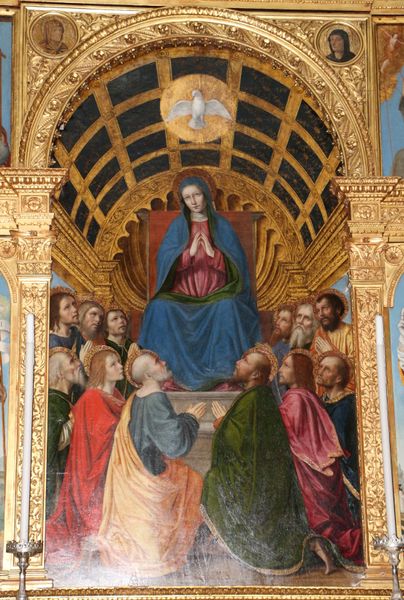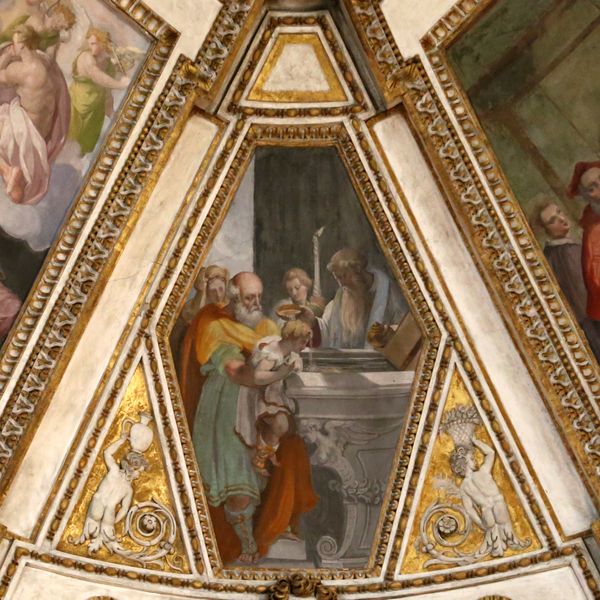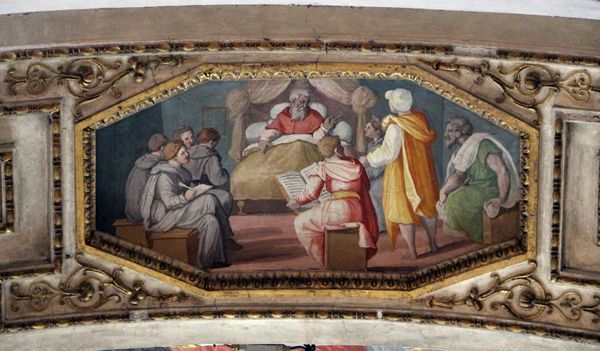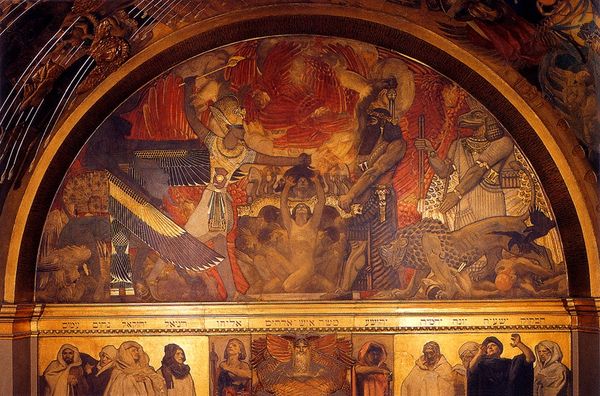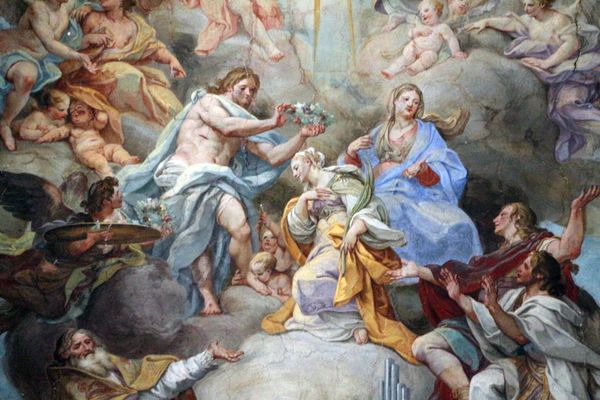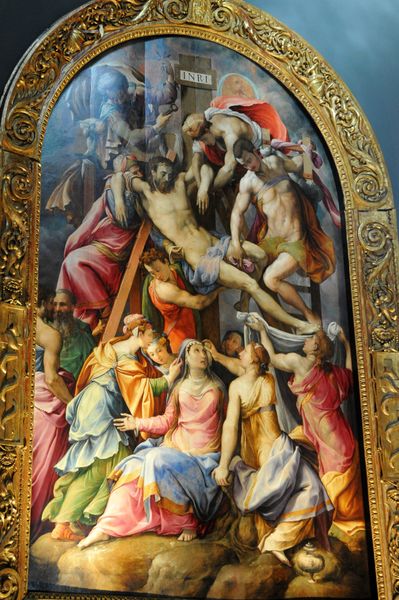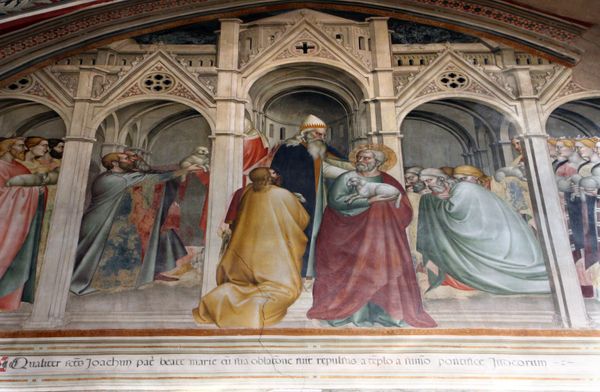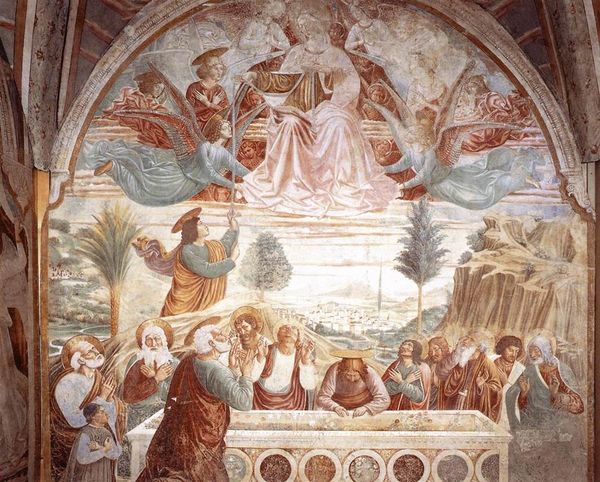
painting, fresco
#
narrative-art
#
painting
#
figuration
#
fresco
#
oil painting
#
italian-renaissance
Copyright: Public domain
Curator: The colors here, in this section of Bergognone’s “Coronation of Mary,” feel so human, so accessible for a religious scene. There’s an immediacy. Editor: Yes, but notice too how carefully considered those color choices are. The deep reds, the muted greens—these were all very specific symbolic cues to the contemporary viewer in the 16th century. We see the hierarchy represented as much by color as by placement. Curator: Hierarchy indeed—especially around female agency in early 16th-century Milan. Bergognone paints in tempera, a difficult medium—and is telling a very particular narrative with women clustered into very limited roles, especially when we look closely at the men looming over them at the top, out of view in this fragment of the larger fresco. Editor: It's a masterful deployment of Marian iconography. Think about the repeated motifs of ascent, the gestures of prayer, the presence of musical angels. These speak to a yearning for divine connection and a reassurance of spiritual grace, so prevalent across various cultures, so tied up with our subconscious symbolism of angels and divine messengers. Curator: But the so-called universality comes at a cost. The Virgin Mary, an idol held up across race and nation. What is it costing women—then, and now—to measure up to this image? What freedoms, desires, and personal experiences are lost when identities are framed through an ethereally unreachable standard? Editor: Well, perhaps it offers solace. The image of collective figures moving towards heaven together expresses community as an ascent, shared aspirations to break class boundaries—of reaching beyond ourselves. Curator: Even the figure with her arms flung outward looks unsure. To break boundaries requires recognition that they’re even there, an awakening for early women. But the woman almost doesn't know how to believe or understand such agency. I notice a resistance to engage beyond religious norms. Editor: I see what you mean about hesitancy. And looking closely, the gestures aren’t exactly uniform, either. The emotional registers are different from person to person. And this speaks to how faith is embodied. There’s no unified or regulated experience. I also notice a great cultural diversity across faith, across centuries. I mean, it feels less about faith than yearning... Curator: That’s where the image’s impact lingers, this expression of a human hope… and the crushing weight of restrictive identities and narratives of history.
Comments
No comments
Be the first to comment and join the conversation on the ultimate creative platform.
